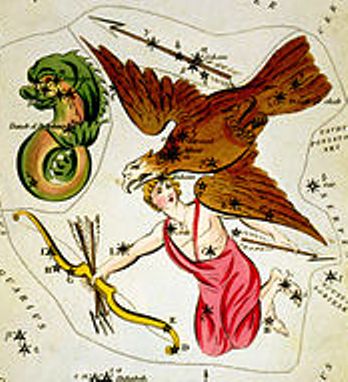
Nár: the Dead Man
The 'Lost' Constellation
by Peter Krüger
©2012
[Germanic Astronomy]
In Völuspá we find the word nár three times. In the same poem, we find it as a dwarf name in the Dvergatal and in the word Náströnd. Nár can be translated easily as 'dead body, corpse,' [German: 'Leichnam']. Since many figures of Völuspá can be traced back to constellations, it's worthwhile to investigate if there has also been a constellation of Nár. Indeed there is a Sumerian/Babylonian parallel in the sky, the constellation of LU.USH2. It's translated as well as 'dead man or corpse'. The correct localization is still a matter of dispute but I agree with Gavin White, Babylonion Star-Lore, to identify it with the constellation Sagitta, the arrow.
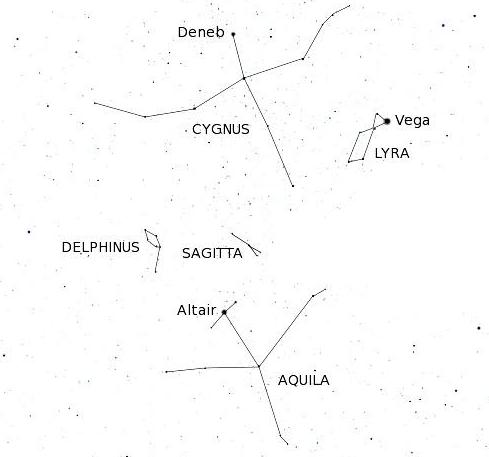 |
 x x |
If this localization is right, we should be able to confirm it by having a look on the other figures mentioned in the corresponding stanzas of Völuspá. I'd like to start the investigation with the last stanza of Völuspá:
|
Þar kømr inn dimmi dreki fljúgandi, naðr fránn, neðan frá Niðafjöllum. Berr sér í fjöðrum - flýgr völl yfir - Níðhöggr nái - nú mun hon søkkvask. |
There comes the dark
dragon flying glittering serpent, below from Nidi's mountains. Nidhögg in his feathers —he flies over the field— carries corpses. Now she must sink. |
If we assume an association to constellations than there is a self-evident choice for dreki: the constellation of Draco, the dragon. Indeed the dragon is not a very bright constellation, that's why it's called `the dim dragon'. In contrast to other authors, I don't think that the dragon and Nidhöggr are identical but two different constellations. We learn from this stanza that Nidhögg's main attribute is wings and that these seem to be in proximity to Sagitta/Nár. Thus we must look elsewhere.
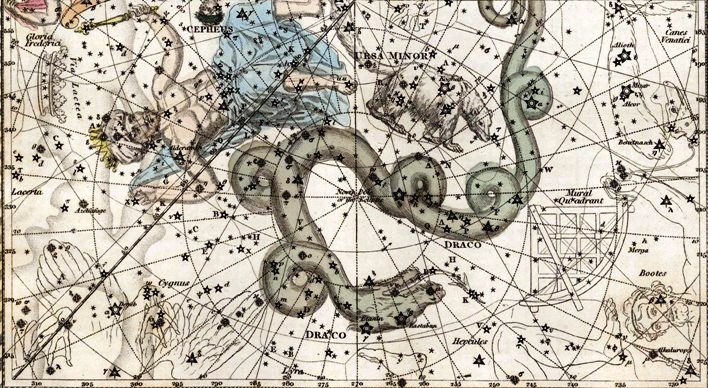
|
Hrymr ekr austan, hefisk lind fyrir, snýsk Jörmungandr í jötunmóði. Ormr knýr unnir, en ari hlakkar, slítr nái Niðfölr, Naglfar losnar. |
Hymir drives from the
east, hoists his shield before him Jörmungand coils in giant rage. The Serpent roils the waves and the eagle exults— Pale-Beak tears corpses Naglfar is loosed. |
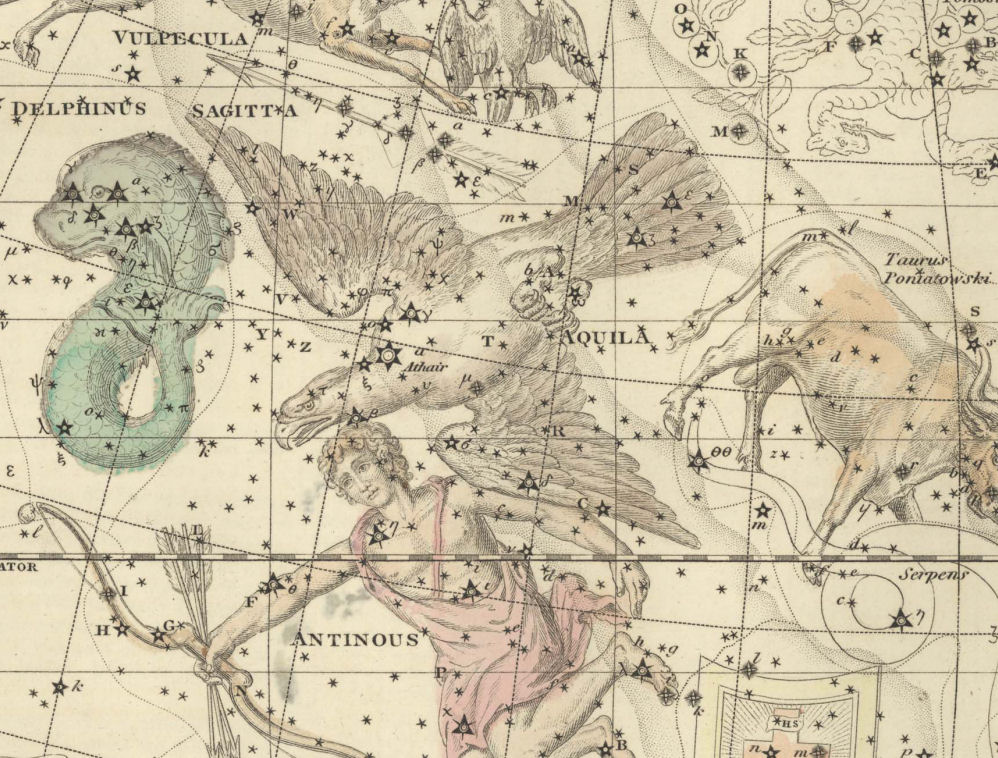

Interesting is also the name Nidfölr or Nef-fölr. This name is normally translated as 'the Pale-beaked'. Besides the eagle we find indeed next to Sagitta two other constellations that have been seen as birds. One of them is Lyra, known besides a lyre also as a vulture. The name of the bright star Vega stems from Arabian an-nasr al-wāqi, 'the falling eagle' translated into Latin as Vulture Cadens (the harp in Völuspá is not related to Lyra but to Corona Borealis).
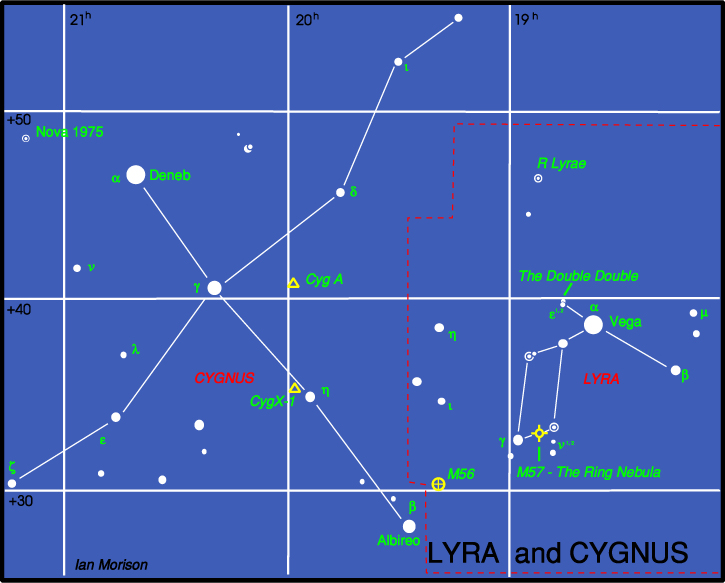
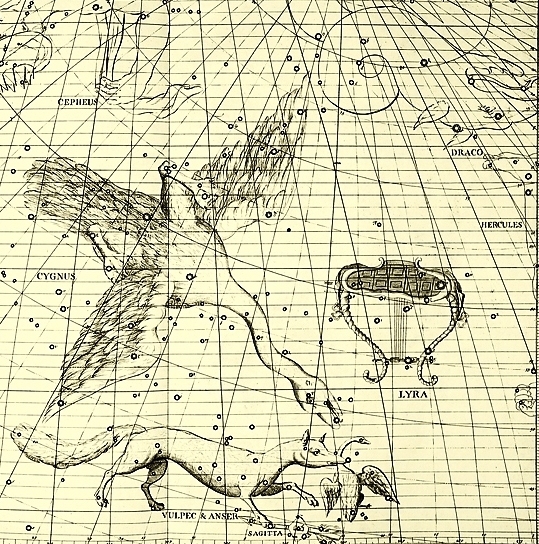
| Sal sá hon standa
sólu fjarri Náströndu á, norðr horfa dyrr. Fellu eitrdropar inn um ljóra, sá er undinn salr orma hryggjum. |
A hall she sees standing far from the sun on Náströnd, its door faces north. Drops of poison fell through its roof-vent. That hall is woven of serpents' backs. |
I assume therefore that the Náströnd itself is the rift of the Milky Way between Sagitta/Aquila and Ophiuchus. The tongue of the Milky Way beside it could be the hvera lundi in another stanza of Völuspá.
|
Sá hon þar vaða þunga strauma menn meinsvara ok morðvarga ok þanns annars glepr eyrarúnu. Þar saug Niðhöggr nái framgengna, sleit vargr vera - vituð ér enn, eða hvat ? |
She saw there wading in heavy streams perjurious men and murderous wolves (vargr) and the one who seduces another's trusted wife. There Nidhögg sucks the corpses of the departed the wolf (vargr) tears men. Know ye yet or what? |
We find indeed a third bird next to Sagitta/Nár. Cygnus, the swan. In early Greek texts it was simply called the bird. In Sumerian/Babylonian times, it was seen as a winged panther, associated with disease, the dead and the underworld (compare Gavin White, Babylonian Star-Lore). Looking at its shape, it has two wings formed by the stars eta- and delta-Cygni. As its head we find the star beta-Cygni, Albireo called in Arabic al-Minhar al-Dajajah, "the hen's beak, pointing directly to Sagitta/Nár, the corpse. To close the loop, we return to the first stanza discussed, in which Cygnus borders on Draco, the dragon.
Overall Sagitta/Nár is not located in the best neighborhood one can imagine with a snake, varg, eagle, vulture and another raptor surrounding it. This must be the Niflhel of the northern myth. The word nifl, corresponding to the German Nebel, surely refers to the 'Sternennebel' [nebulae] of the Milky Way where Sagitta lies.
